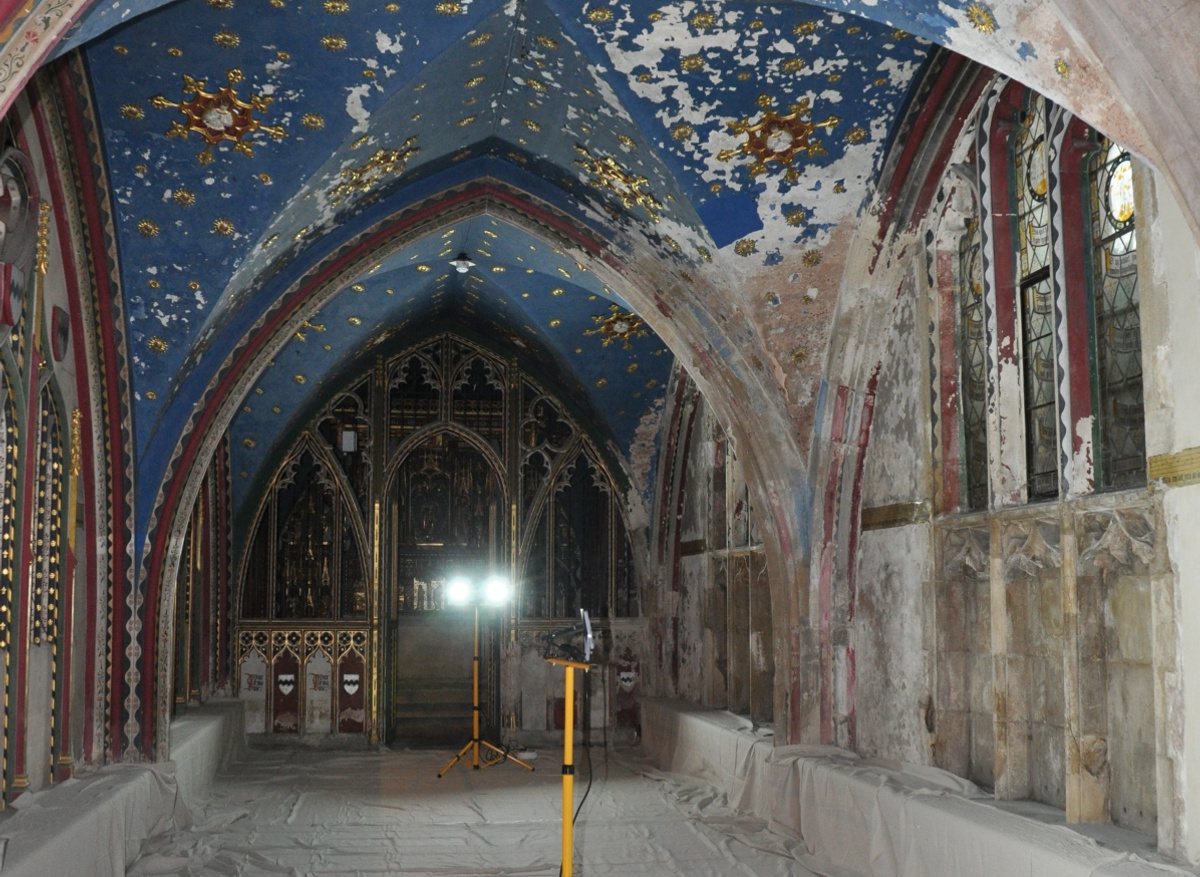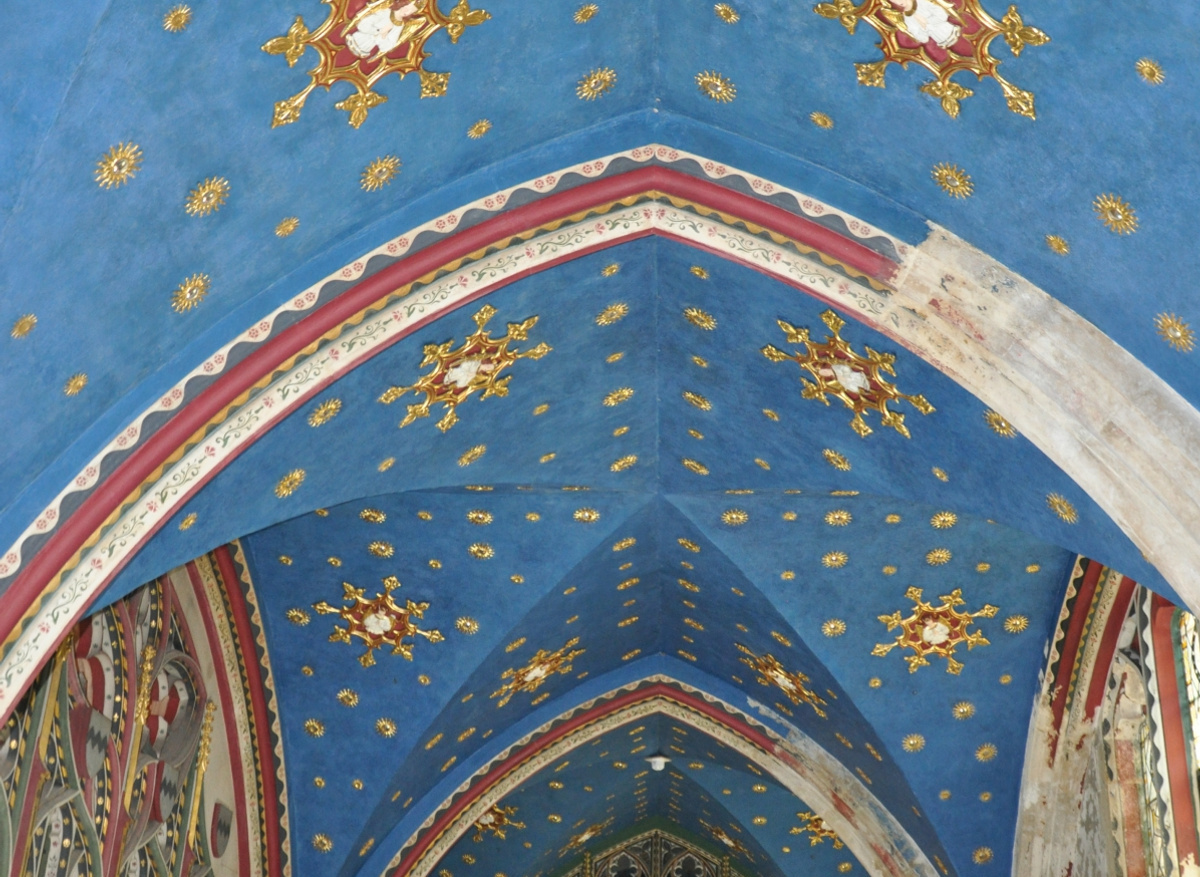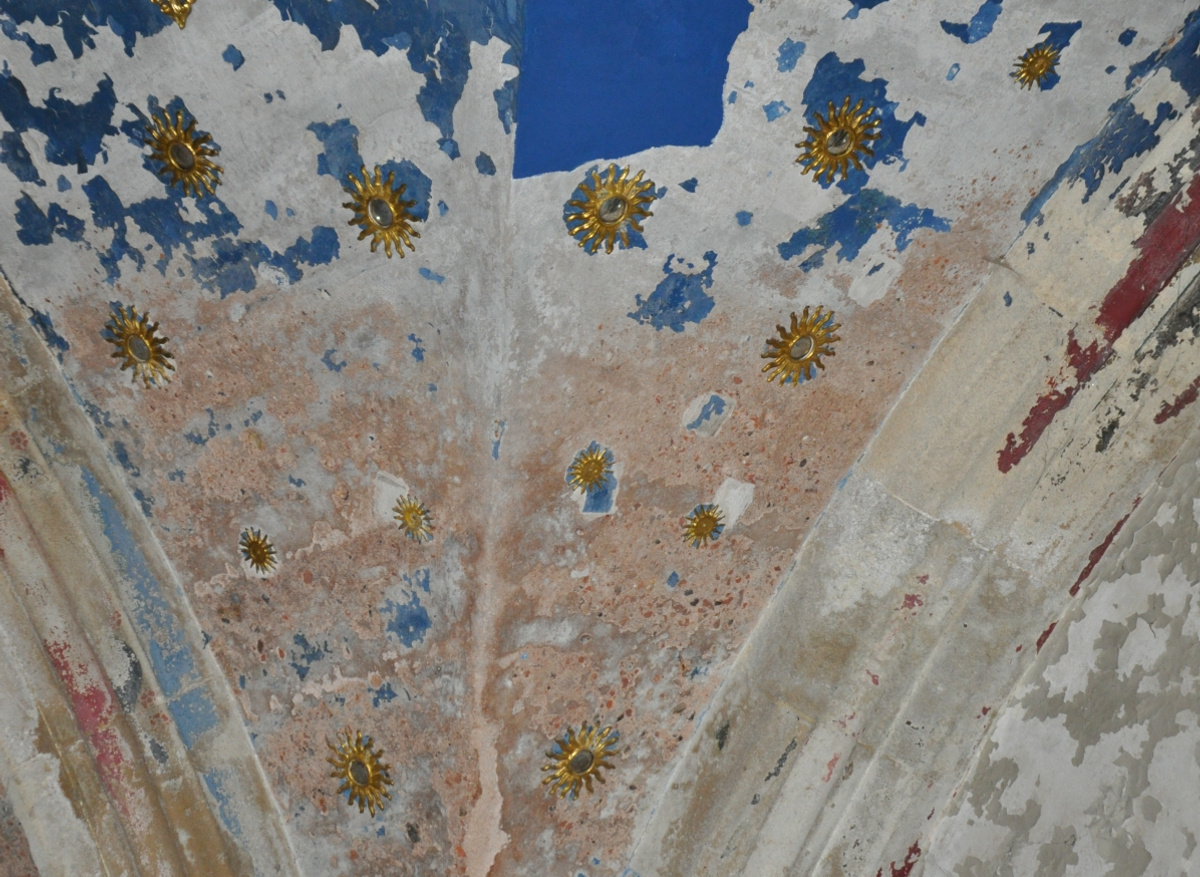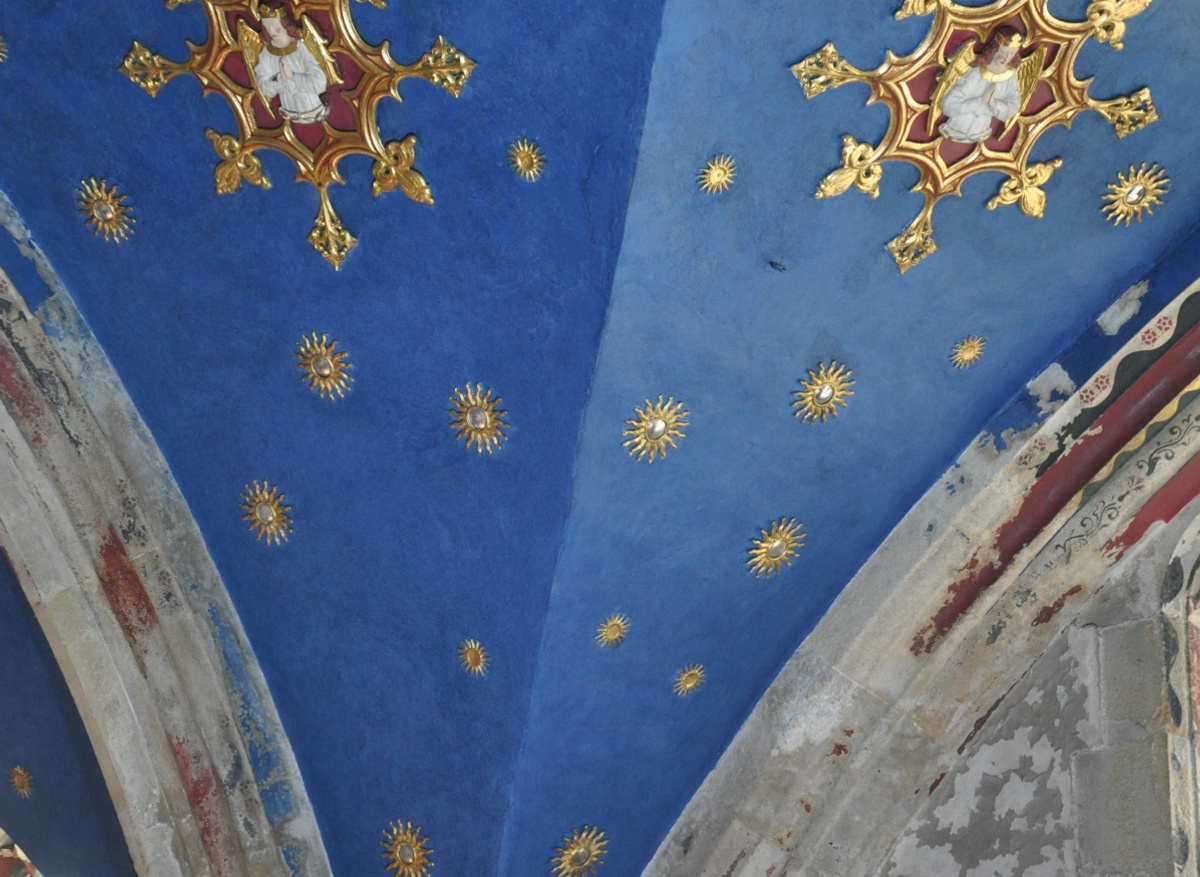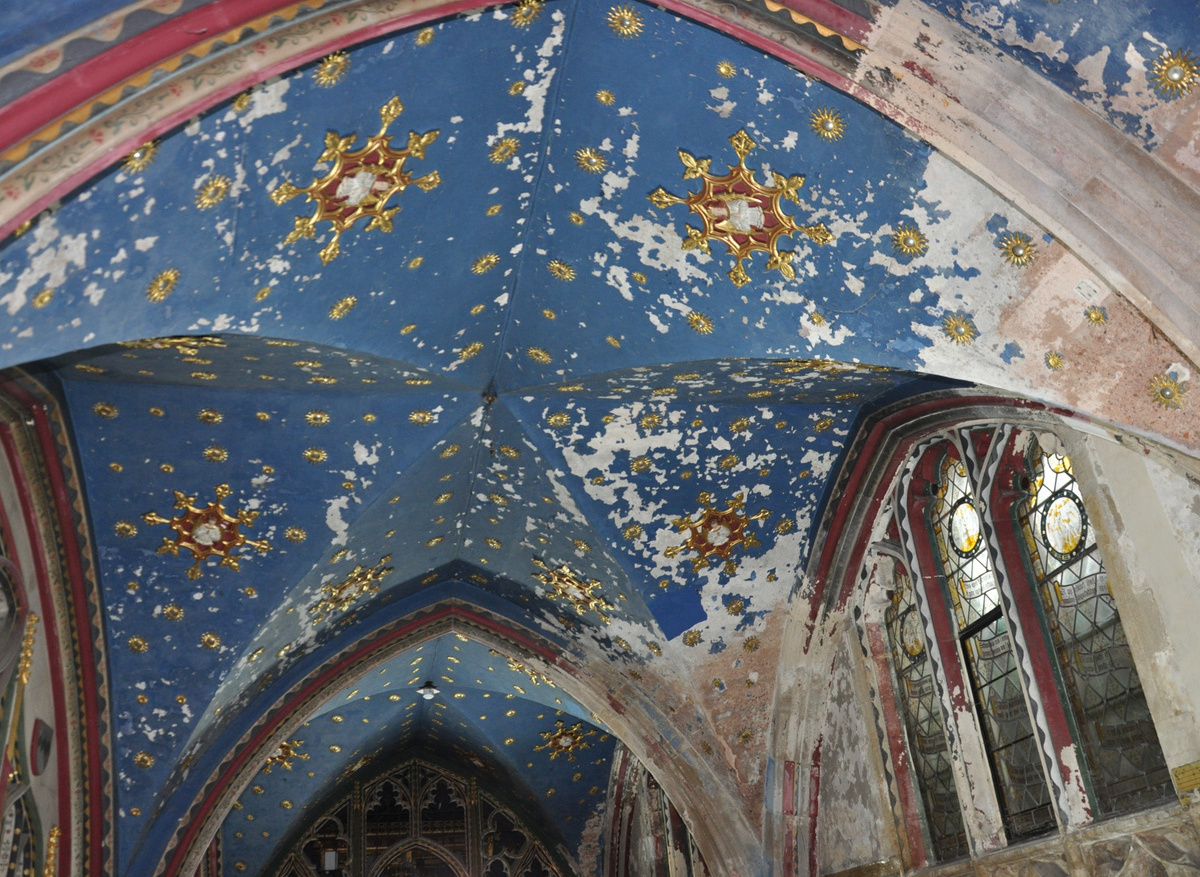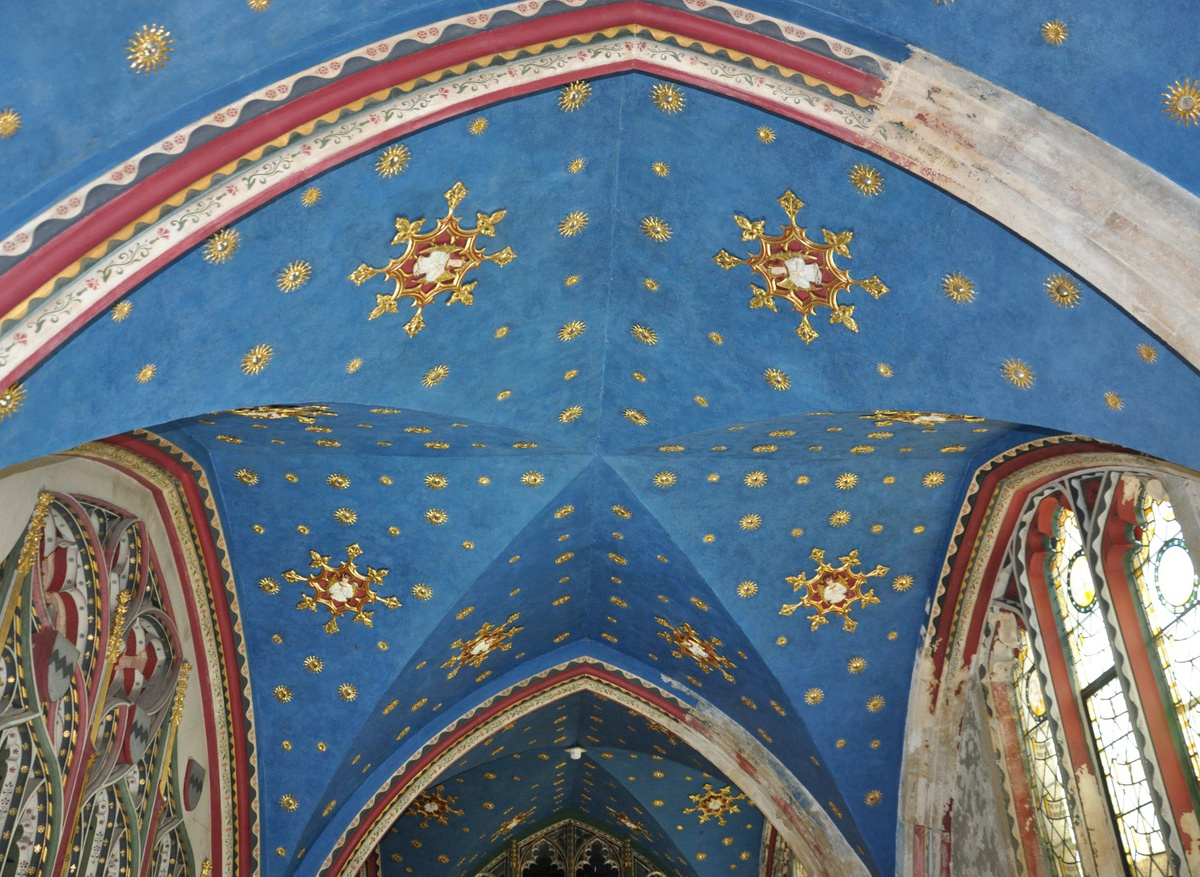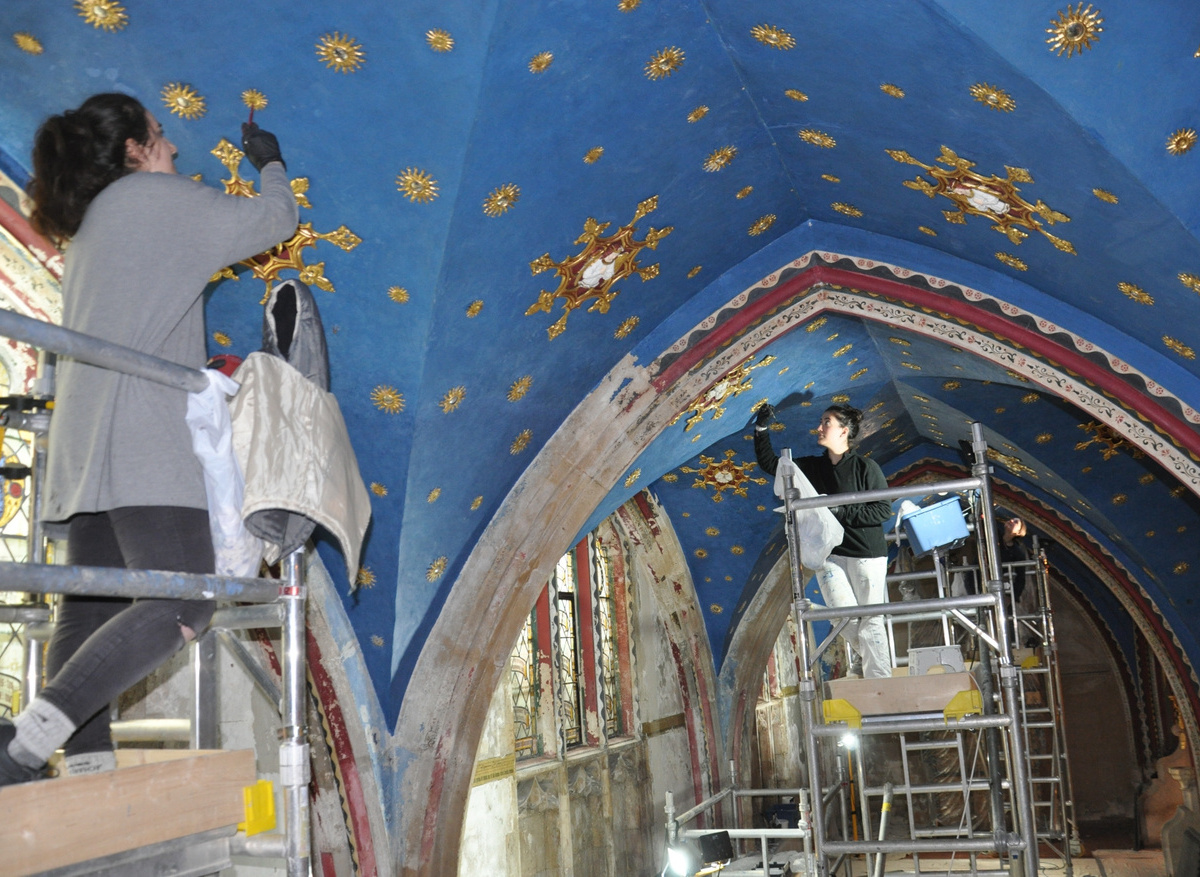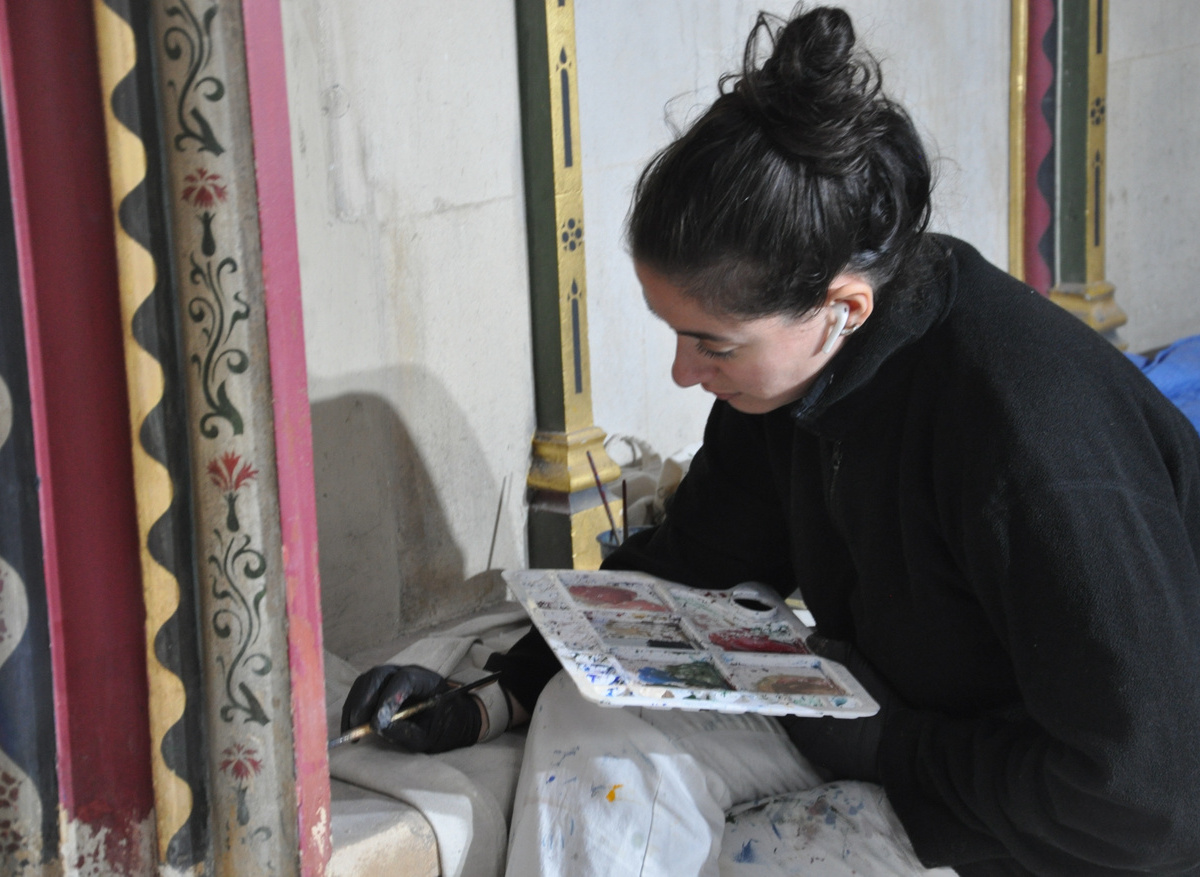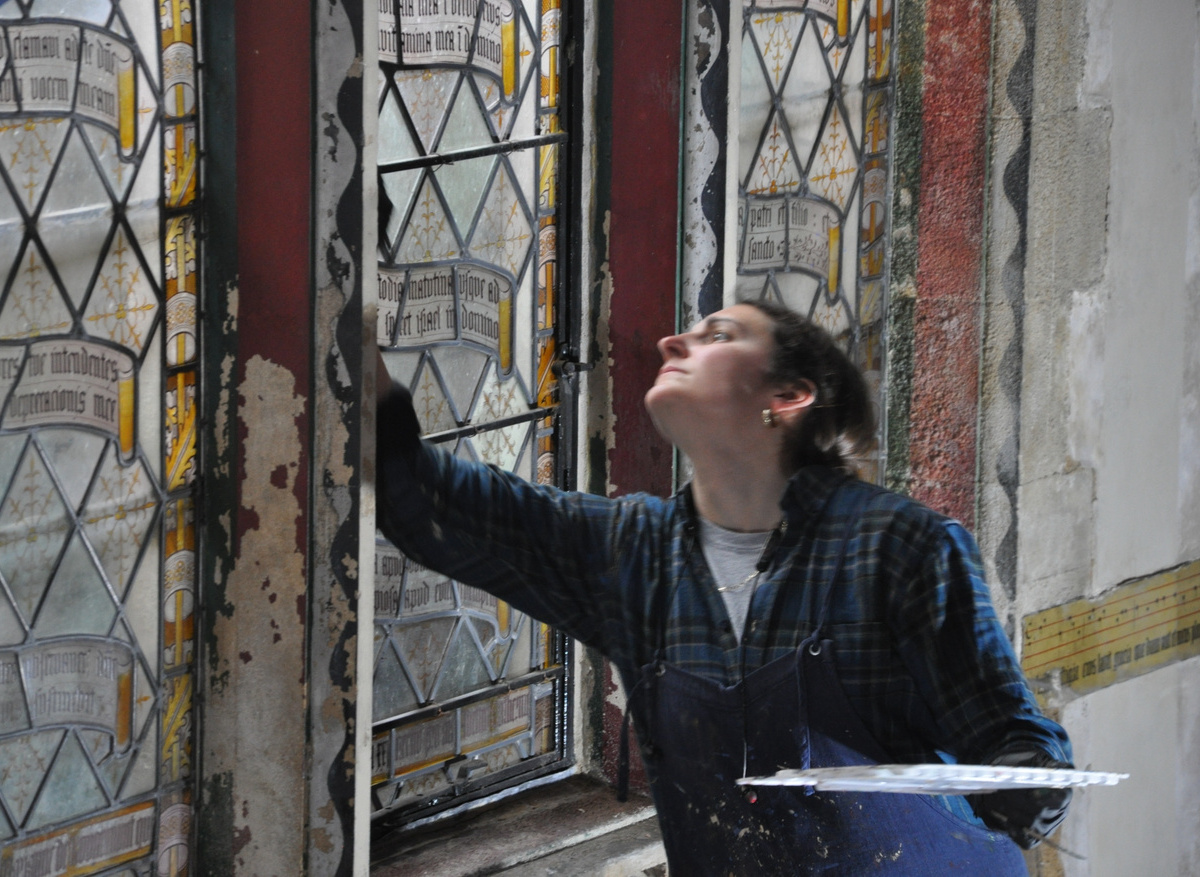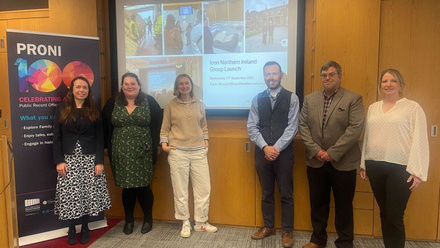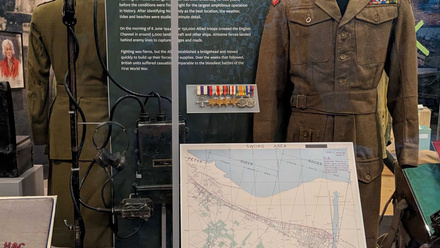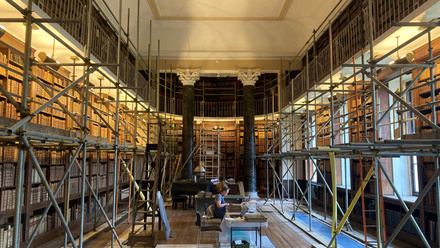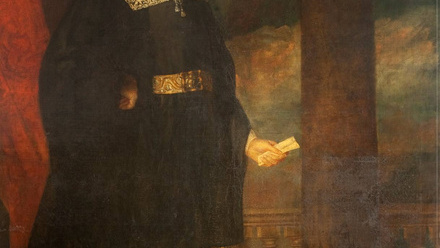Icon member Claudia Fiocchetti ACR writes about the conservation treatment of Ninian Comper’s decorative scheme of the nave in St Sepulchre Chapel in the undercroft of St Mary Magdalene Church in Paddington, London.
The Chapel
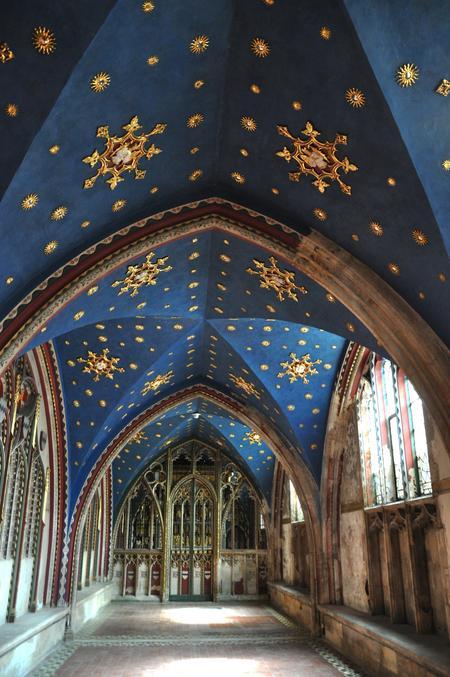
St Mary Magdalene church in Paddington, London, is a grade I listed building. Within its crypt, the St Sepulchre Chapel (1895) was designed by Ninian Comper, who is considered the last of the great Gothic Revival architects. St Sepulchre Chapel was the first extensive commission of his earlier career.
Unfortunately, the chapel’s location and its substrate materials are the main causes of the severe deterioration affecting the painted schemes and its stone fabric. Poor environmental conditions, such as water ingress, have been causing deterioration of the chapel interior since soon after its completion. The proximity of the Grand Union Canal and the fact that the chapel sits mostly below ground level, being the main causes.
The chapel was repainted at least once, in 1937, by William Butchart, who complained about some areas already deteriorating before he had even finished his work there.
Before and After
Conservation research
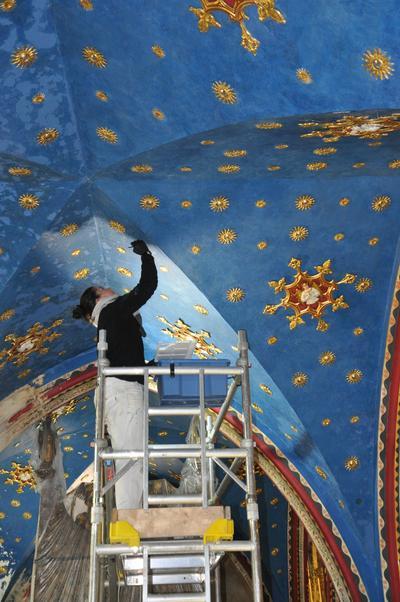
Prior to establishing the key methodology for the design of an extensive conservation treatment phase for the decorative scheme in the chapel’s single nave, a long, comprehensive period of research and investigation took place. This was led and coordinated by Caroe Architecture Ltd (Accredited Conservation Architect and project lead) in conjunction with Tobit Curteis Associates (TCA) in order to analyse the challenging environmental conditions in the chapel and to address and control the causes of deterioration.
Since 2016, TCA (Conservation Environmental Specialist) have undertaken environmental monitoring to measure and analyse conditions such as temperature and relative humidity within the chapel.
Although the chapel itself is unheated, ‘the new heating system, which operates according to conservation protocols’, and which heats the adjacent undercroft and the church above the chapel, ‘has an indirect effect from heating the main crypt reducing seasonal temperature variations and significantly reducing the risk of condensation’(TCA report 2022).
A screen was designed and installed to separate the chapel from the undercroft, to further increase buffering between the spaces as additional protection for the sensitive wall paintings.
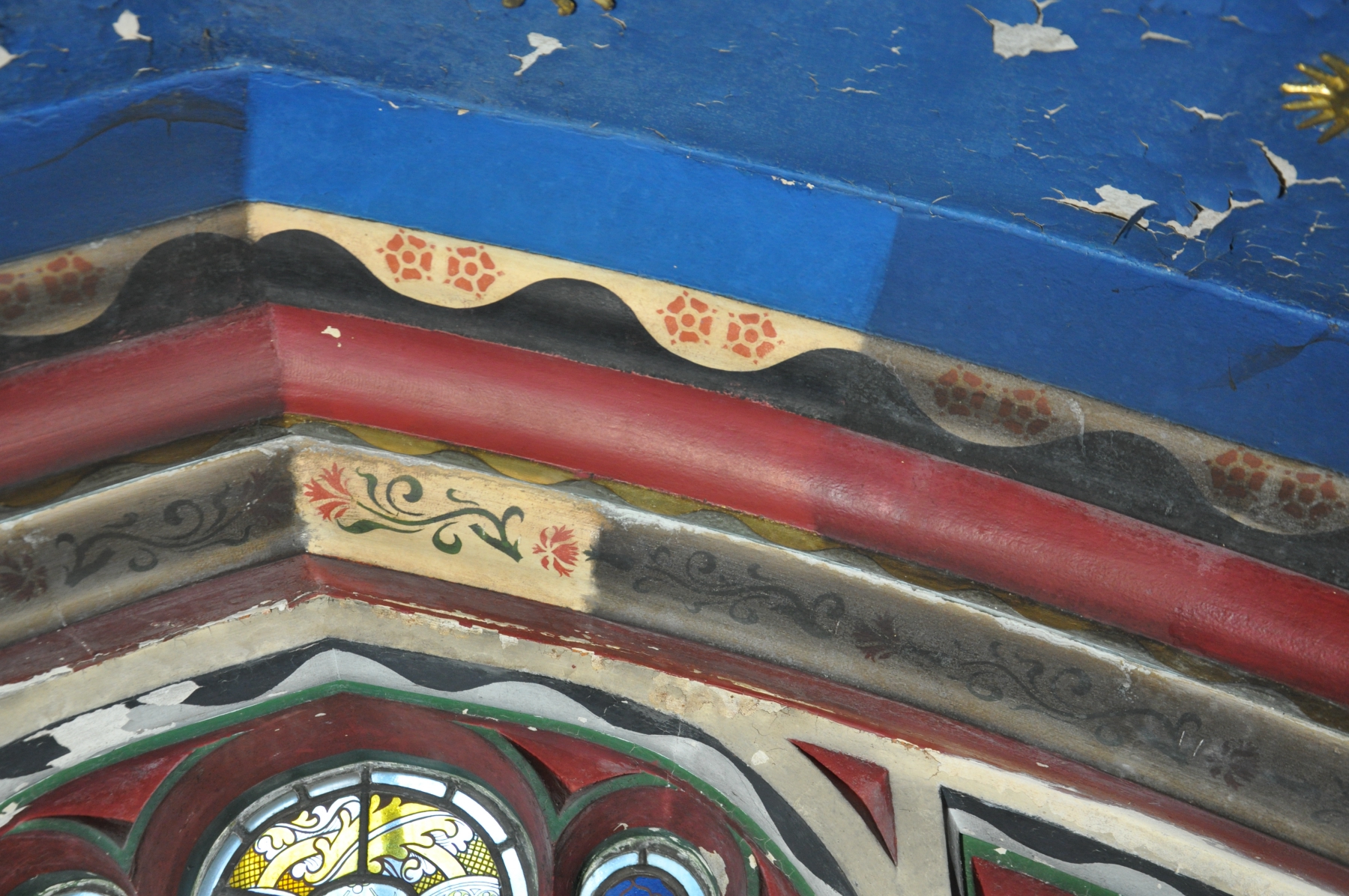
In addition to that, before the commencement of the conservation treatment project, Icon Accredited Conservator Claudia Fiocchetti ACR and her team undertook two extensive trial campaigns in 2021 to identify the most suitable methods and materials for undertaking the work.
The most evident deterioration issue in the chapel is the severe de-lamination of the paint layers, in particular on the vault. Large areas of the vault, ribs and window traceries, especially on the south side of the chapel, had suffered a complete loss of paint and ground layers, leaving the plaster on the vault in these areas exposed and affected by de-cohesion (binder loss) and salt efflorescence.
Conservation treatment
The 4-month-long conservation treatment campaign took place in the three bays that form the single nave of the chapel and included the vault, the ribs and the window traceries of the south wall. Other elements of the nave, as well as the Sanctuary, were excluded from this conservation phase due to budgetary constraints.
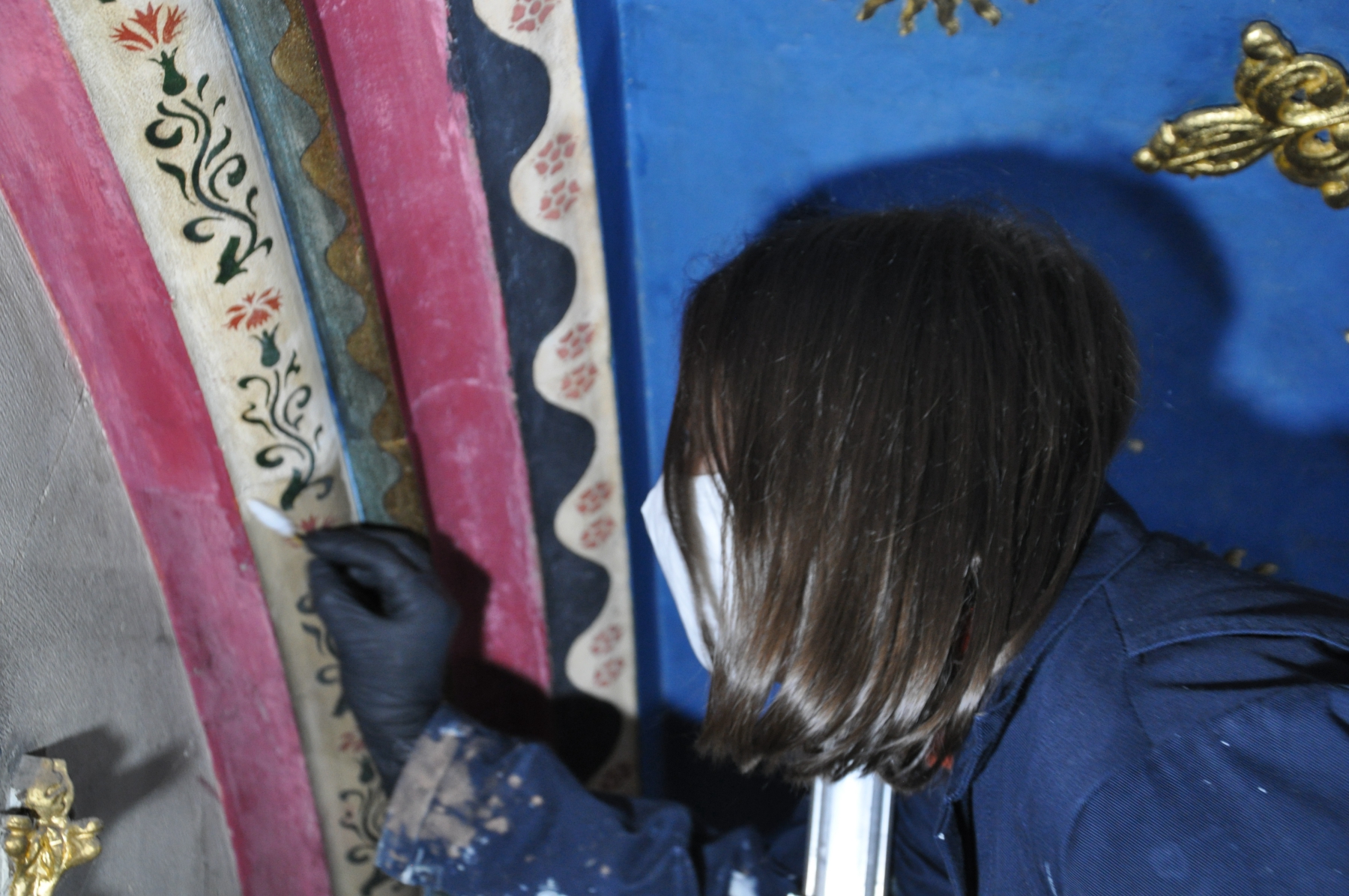
The aims of the conservation treatments were:
- To stabilise and slow down further de-lamination and detachment of the paint and ground layers, and to re-establish adhesion between the supporting plaster (vault) and the supporting stone (ribs and south wall window traceries).
- To stabilise and slow down further de-cohesion of the plaster layers (vault), consolidating the original plaster and re-establishing the integrity of the plaster layers.
- To remove ingrained surface dirt and deposits from the surfaces of the decorative scheme, as well as reduce the visually disruptive separation of the binder from the original pigment particles, which could be seen on the painted surface of the vault.
- To re-fix those elements that had become detached or dislodged, such as lead ornaments (stars and octofoils) and the plaster cast-angels on the vault.
- To de-frass the superficial, loose efflorescence build-up from affected surfaces; this was only completed in areas where the salt crystals were easily removed without causing further damage to the original surfaces.
This project was made possible thanks to a generous NLHF Grant and the Paddington Development Trust. It is imperative to extend the conservation treatment to the rest of the chapel, and for this reason the Paddington Development Trust and Grand Junction remain very active in fundraising in order to achieve this goal.
Finally, I would like to express my thanks to my wonderful team of conservators: Rosie Bright, Camilla Molignano and Elisa Fascia, Without their effective teamwork, the completion of this conservation treatment would not have been possible. It was a pleasure for us all to work on such a challenging and fascinating project.
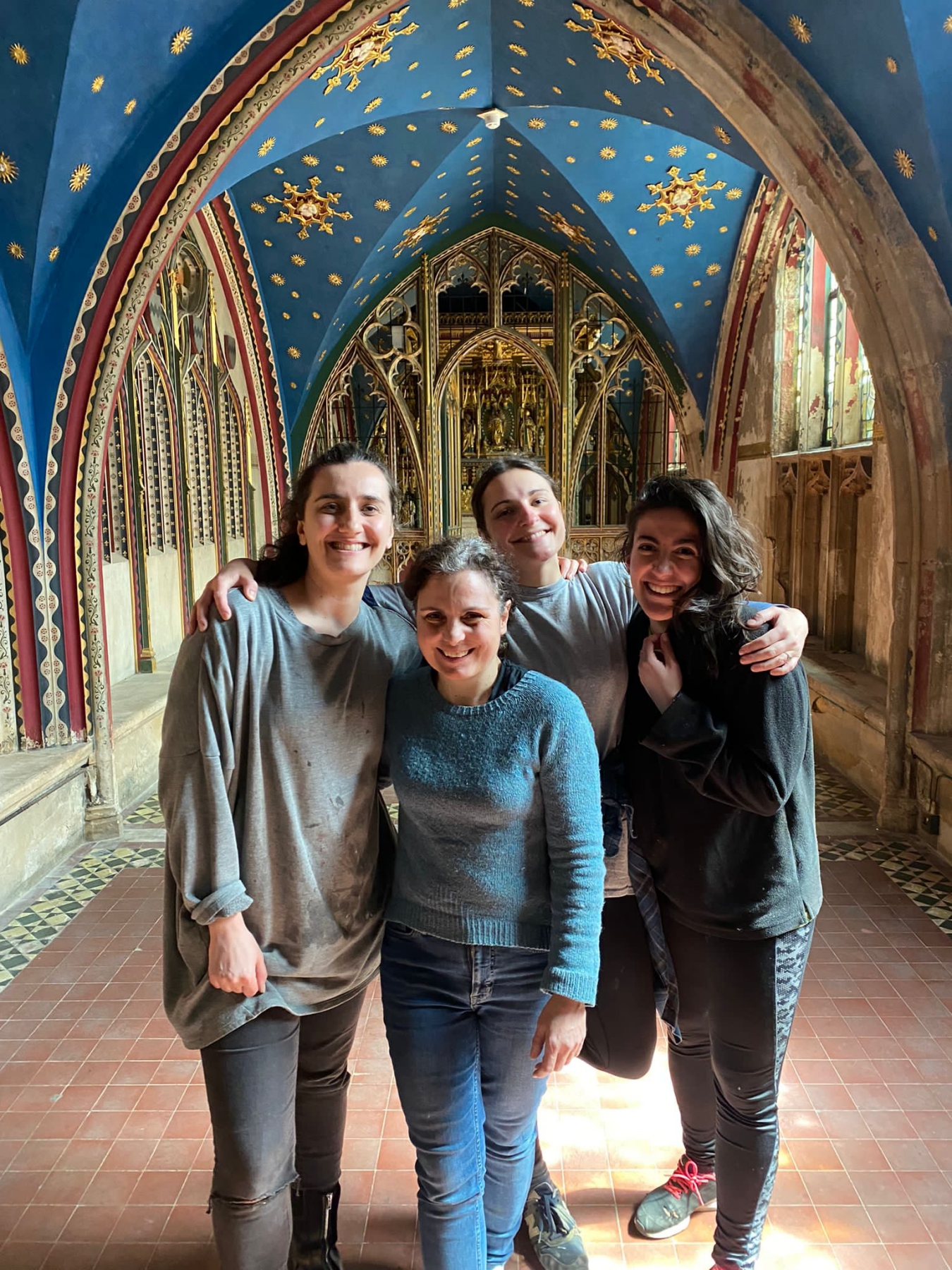
Claudia Fiocchetti is an accredited art conservator specialising in the conservation of Wall Paintings and Stone. In particular, she has had extensive practical experience working on a large variety of Wall Paintings and has a deep knowledge of various media and materials, as well as of different techniques and periods.
Claudia trained in Painting Conservation in Rome, she has a degree and a post-graduate degree in 'Conservation of Cultural Heritage'. As well as undertaking practical conservation projects, she has also taught both theoretical and practical topics in art conservation.
In private practice since 1993, she has been working in Italy, UK, France and Egypt in a freelance capacity in collaboration with highly respected conservation practices, as well as independently for private clients.
She is based in Surrey, mostly working in London but she is available to work throughout the UK and internationally.
You can find Claudia at claudiafiocchetti.com, or follow her on Instagram at @claudiafiocchetticonservation and on LinkedIn.

